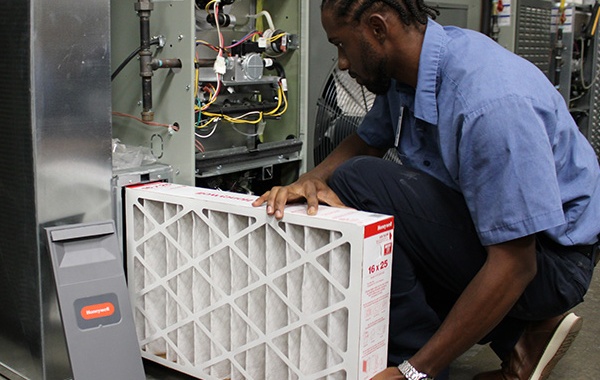A furnace is a critical appliance in any home, particularly during the colder months when consistent warmth is essential. Understanding how it works can help homeowners maintain their systems and troubleshoot issues before they become major problems. A well-maintained furnace ensures comfort, energy efficiency, and safety throughout the heating season.
The furnace consists of several key components, each working together to create a reliable heating system. When one of these components malfunctions, it can lead to inefficiency or even complete failure of the system. Regular furnace repair can address these issues before they compromise your home’s comfort, which is what the remaining article will explore in detail.
The Burner Assembly: How It Powers the Furnace
The burner assembly ignites the fuel, creating heat for the furnace. It includes components like the ignition system and gas valves. These parts work together to ensure that combustion occurs properly. If the burner malfunctions, it can cause the heating system to fail to heat the home. Regular maintenance is necessary to replace damaged parts or restore proper function. Timely attention to the burner assembly can prevent system breakdowns.
The Heat Exchanger: Transferring Heat Effectively
The heat exchanger transfers heat from the burner into the air that circulates through the home. It ensures that the heated air reaches the ductwork without mixing with harmful combustion gases. If the heat exchanger becomes damaged or cracked, it can cause dangerous gas leaks. Regular inspections can identify potential issues, and prompt repairs are essential for maintaining safety and comfort.
The Blower Fan: Circulating Heated Air
The blower fan circulates warm air throughout the home. Once the air is heated, the fan pushes it through the ductwork and into rooms. If the blower fan stops working or malfunctions, it can result in uneven heating. A furnace repair technician can address motor issues or other problems with the blower to restore balanced airflow and proper heating throughout the home.
The Thermostat: Controlling the Temperature
The thermostat regulates the furnace’s operation, adjusting the temperature based on the desired setting. It senses the room’s temperature and signals the heating system to turn on or off accordingly. If the thermostat is malfunctioning, it can cause the system to operate inefficiently, leading to temperature fluctuations. Repairing or replacing a faulty thermostat is essential for maintaining accurate temperature control and achieving efficient heating.
The Air Filter: Maintaining Air Quality
The air filter prevents dust, dirt, and debris from entering the furnace and clogging its components. It also improves indoor air quality by trapping allergens and pollutants. A dirty or clogged filter can restrict airflow, causing the furnace to overwork and become less efficient. Regularly replacing or cleaning the filter is an easy way to enhance both air quality and performance.
Why Furnace Repair is Necessary
Furnace repair is an essential part of maintaining a functional heating system. Over time, various components may experience wear and tear, leading to issues that can affect performance. Identifying these problems early and addressing them with professional repair can save homeowners from costly replacements and extensive breakdowns. In the event of a breakdown, it is important to consult a professional technician who can diagnose and resolve the issue promptly, ensuring your furnace continues to function efficiently.
Understanding the key components of a furnace is crucial for proper maintenance and preventing breakdowns. Regular inspections and furnace repair can help identify problems early and keep the system running smoothly. Whether it is the burner assembly, heat exchanger, or blower fan, each part plays a significant role in delivering reliable warmth throughout the colder months. By paying attention to these essential components, homeowners can ensure their heating system operates efficiently for many years.















